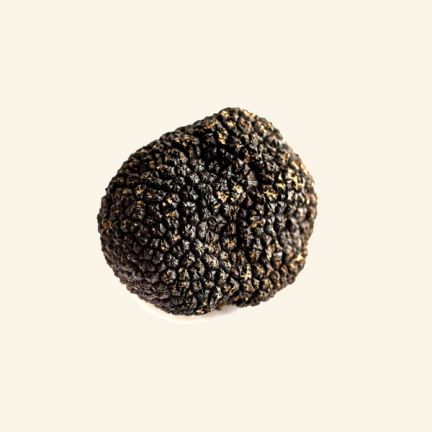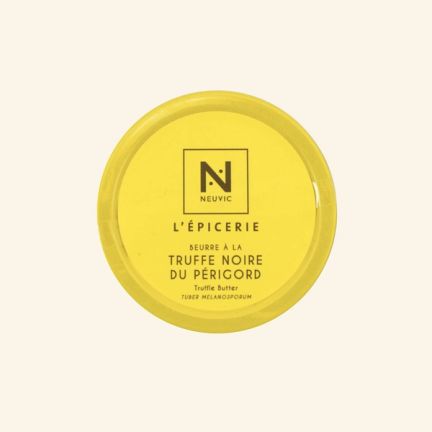
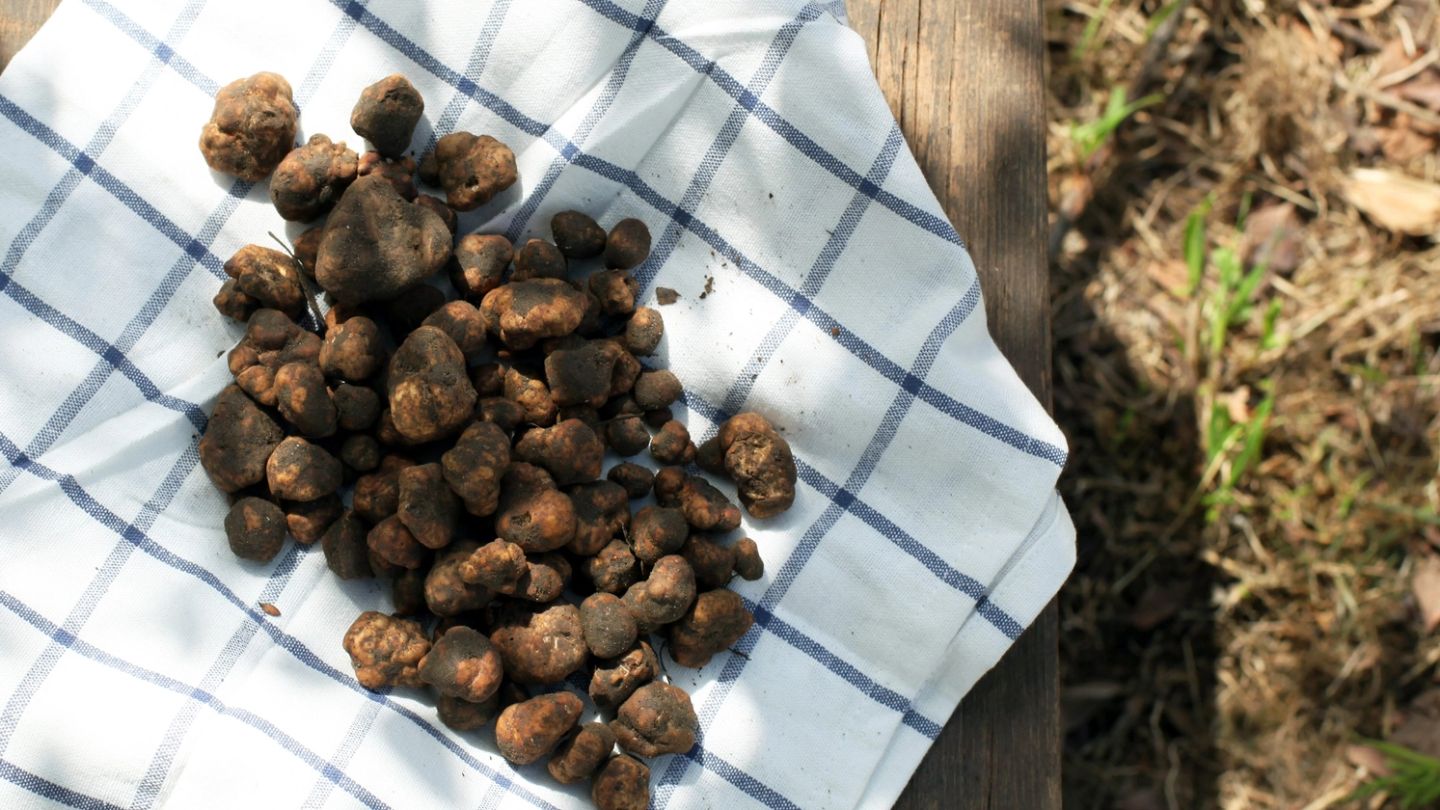
Close Shaves: The dark, delicious world of the international truffle trade
From the forests of northern Italy to the tables of Knightsbridge, we followed the truffle trail through the dangers and the dishes that make them worth their weight in gold
Words: Jonathan Wells
Our story begins where the truffle trail ends; on a bed of pasta.
In a small copper pan, the chef in front of me is anointing a nest of egg tagliolini with a black truffle-infused béchamel sauce. It’s mouth-watering stuff. A stunning amount of parmesan comes next, and then it’s into the oven, where a thick, golden crust will seal the signature dish.
This is Harry’s Dolce Vita, or rather the kitchens below the Knightsbridge restaurant. Striped aprons are milling around, steam is rising from a parade of saucepans and an antiqued map of Italy curls at the edges on the wall. The prized black truffles, 10 grams of which go into every serving of the Truffle Tagliolini, are sitting pretty — in their own ugly way — on the countertop in a box of desiccant rice.
"Our story begins where the truffle trail ends; on a bed of pasta..."
Revered, respected and worth more than any other ingredient in this, or any, kitchen, it takes an international industry to get these tubers to the table. And, while they may look unassuming, unearthing truffles can dig up a surprising number of problems: Turf wars, smuggling and international food fraud, to name but a few.
However, while both the prices and stakes of this global trade may be high, and despite them meeting their Michelin-starred ends on the chopping boards of Mayfair and Knightsbridge, the truffle trail begins much more modestly. It can, in fact, be traced back to that antique map on the kitchen’s wall — buried below the dirt in the forests of northwest Italy.
Digging up dirt in the forests of Northern Italy
It’s a hot day in Tuscany, and Romeo and Merlino, two Lagotto Romagnolo mongrels, are clambering on me in the flatbed of a pick-up truck. Paolo, a local truffle hunter, has turned off the engine and is already forging a path through the sun-dappled forest. It’s the crack of dawn, and we’re on the hunt for ‘tartufi’.
Romeo, a truffle hunting dog
Paolo and Romeo
Paolo is dressed in varying shades of khaki, holding a long stick tipped with a sharp blade in one hand, and throwing handfuls of dry leaves into the air with the other. His dogs are enjoying the show. “You need to excite them,” he explains to me in slow, considerate Italian. “You train the dogs when they are young, when it is a game to them. So it must always feel like a game.”
The dogs are quite the pair. Romeo has already started slowly sniffing his way around the forest floor, ignoring the strong smell of mint and colourful bursts of wildflowers. Merlino is less committed, instead streaking through the trees, clearings and even Paolo’s legs with his tongue lolling and tail wagging.
“He is good,” laughs Paolo, waving vaguely at Merlino. “I was given him when he was young, for free, by owners who thought he couldn’t find truffles. They were wrong. He is very good. They tried to buy him back, for €5,000. I said no.”
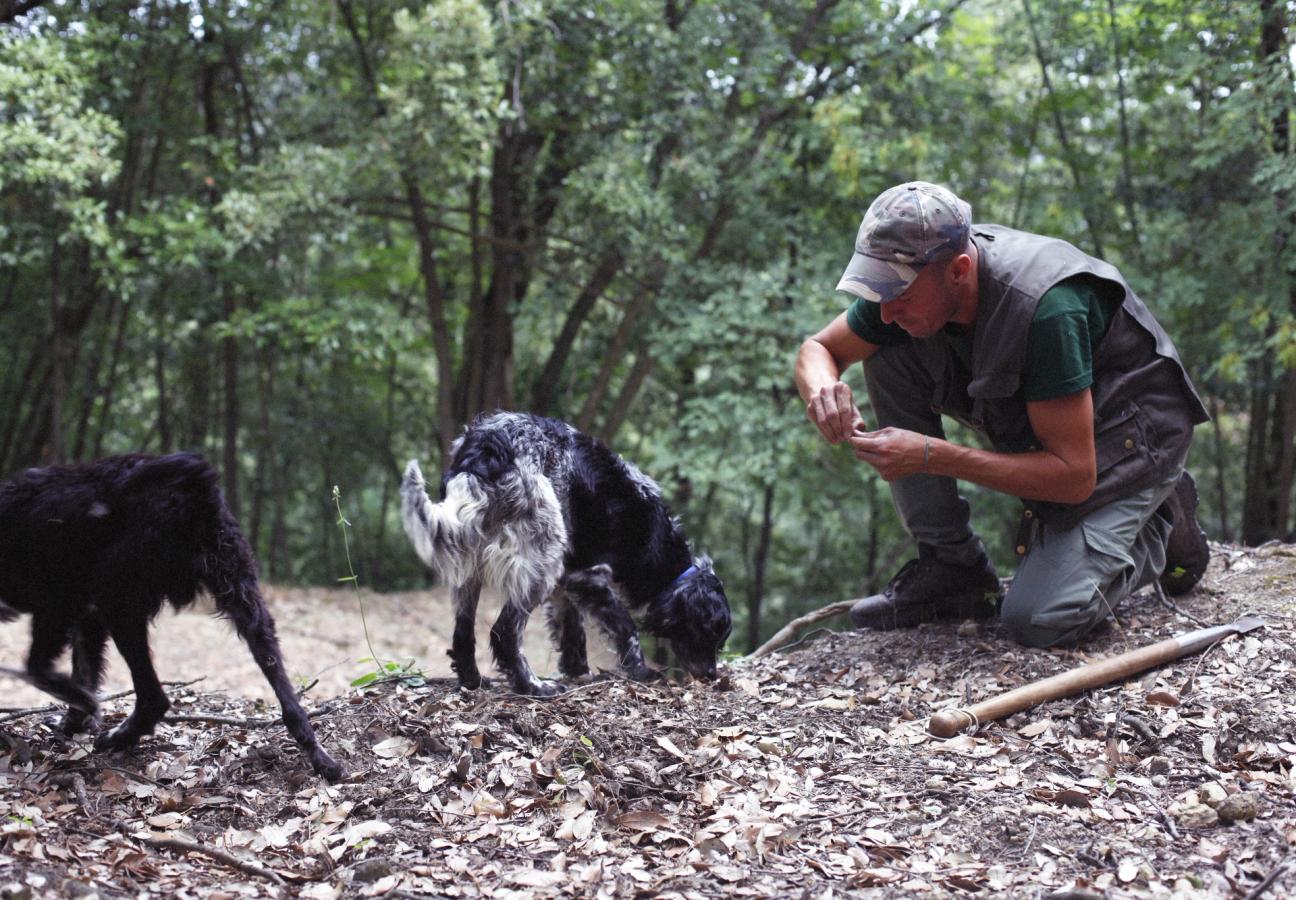
Romeo and Merlino are Lagotto Romagnolo mongrels
It wouldn’t have been a deal worth making. Paolo, in his mid-thirties and truffling for over a decade, can make that much from truffles in under a month. And these forests, the verdant grounds of agro-tourism hot spot Villa Lena (where you can stay for €77 a night, and take part in a truffle hunt for €20 a person) are Paolo’s patch — and only his.
“You never tell other hunters where you find your best truffles,” says the Italian. “That is dangerous. It is a race, and we are territorial.
“There are big rivalries,” Paolo explains as we pick our way down a steep slope. “And some truffle hunters will do anything to get there first. They will slash your tyres. They will poison your dogs. Kill them. Nothing is off limits. That’s why we sometimes hunt at night.”
“You never tell other hunters where you find your best truffles. We are territorial...”
On slopes such as these, night-time hunting can’t be easy. Paolo nods matter-of-factly. Falling, he says, is another occupational hazard.
“E i lupi,” he adds nonchalantly. And the wolves.
Paolo’s attitude may be blasé, but truffle hunters face these diverse threats all year long. Across the summer months, they search for black truffles. In autumn and winter, the rarer and more expensive white truffle, or tartufo bianco, is the prize. Both grow beneath the ground, when spores latch onto the roots of certain trees. As we follow the dogs, Paolo pats trunks: “Beech, Hazel, Lime”.
Villa Lena is an agro-tourism hotspot
Truffle hunters face diverse threats all year long
The dogs nose pinecones and twigs as they sweep the forest floor ahead of us. They pause occasionally, before huffing with frustration and moving on. Through the trees, Romeo springs into action.
“Vieni!” Paolo shouts after Merlino, running towards Romeo. He pulls the dog’s jaws open, but too late — Romeo has eaten the truffle. It’s Paolo’s turn to growl.
“This is why we don’t use pigs now,” explains the hunter, “because they used to eat everything. It’s illegal now in Italy to truffle with pigs.”
This is just one of Italy’s truffle laws — it’s an expensive export, and must be treated as such. It’s the same in France, where they forage for the Perigord truffle, and in the newer truffle territories of Eastern Europe. But Paolo persists with his claim that this hotly-contested patch is the best. Right on cue, Romeo has found another truffle.
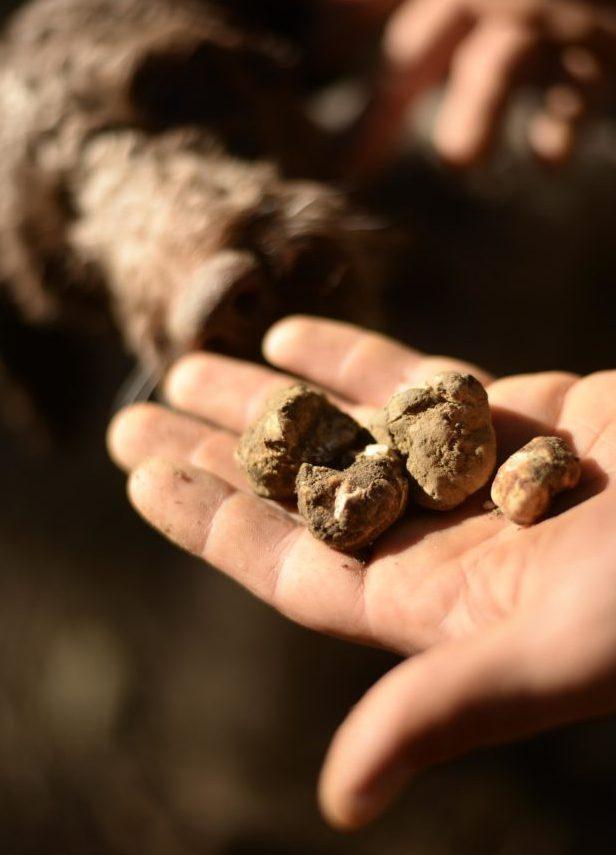
Paolo is set to make €20,000 in white truffles this year
This time, man and dog dig together, and Paolo throws me the knobbly black truffle when he pulls it from the earth. This year’s truffle season – for both black and white — is already looking better than last, the hunter tells me. He’s set to make almost €20,000 in white truffle alone, some of which he sells to restaurants; some privately to locals.
But many truffles, from this forest floor or any other around Europe, make it a lot further. With Britain’s increasing interest in the culinary arts, it’s no surprise that many find their way — reputably or otherwise — to our shores. That, Paolo says, is where the middle men come in.
Striking a deal in the secrecy of Sevenoaks
“I don’t like the word fungus,” says Jonathan Thurkettle, from behind a pair of Ray-Bans and the wheel of his Porsche Cayenne. “They mean more to me than that.”
And so they should. As one of Britain’s leading truffle dealers, Thurkettle, of Fine & Wild, has helped open supply lines from Italy, Spain and even the Southern Hemisphere into the UK. Today, however, we’re on our way to a small Kent industrial estate, where the dealer has tactically — and tactfully — set up his base of operations.
“This is my hidden, secret place,” says Thurkettle, as we head down a leafy lane and pull up in front of a nondescript lock-up. “Look, it offers no secrets to the beauty that lies within.”
It’s a beauty, it would seem, that lies principally in the smell. Unlike Tuscany, where the truffles were fresh, unripened and covered in dirt, when Thurkettle unbolts the door, a strong, heady aroma floods out. It’s an earthy, nutty smell and, like the dealer’s business, all-pervasive.

Thurkettle is one of Britain’s leading truffle dealers
“Yes, truffle dealing is one of the hardest, most time-consuming things I could have ever taken on,” he nods. “It’s a black art. It’s cut-throat. It’s hardcore. And it’s certainly not risk free.”
But unlike Paolo, who faces physical dangers, Thurkettle’s are more practical, and financial. From the black truffle orchards of Northern Spain, where bonsai-ed oaks are lined up like vineyards, to the emerging truffles of Australia, the logistics of importing are exacting. The looming threat of Brexit, and the importing headaches it promises, aren’t helping either.
“I once had to pick up a shipment of Chilean truffles,” laments Thurkettle. “Seven kilos of them. And I knew they’d been badly delayed. I knew they would have gone off. I had to drive them straight to the tip. Bloody nightmare.”
“It’s a black art. It’s cut-throat. It’s hardcore. And it’s certainly not risk free...”
It’s not the only time things have gone wrong. The dealer tells me how he once watched a shipment of precious white truffles worth £10k sit rotting in Mumbai customs due to importing issues. But, for the most part, Thurkettle runs a smooth operation. And that’s thanks, in part, to ‘game-changing’ modern technology.
“I talk to my two or three suppliers over Whatsapp,” he says, scrolling through his phone. “I don’t even speak Italian – I’ve done so much business through Google Translate!”
And this is how it works: Thurkettle selects which truffles he wants from video clips or photo messages, and the dealers pack them in ice and use couriers such as DHL or TNT to ship the truffles to Britain on the last daily flight. Thurkettle has strategically placed himself near Gatwick Airport, and this ensures the truffles make it to his huge steel fridges without losing flavour, integrity or weight. Shockingly, they lose around 3% of their mass every day.
Once refrigerated, the dealer can connect with his customer — be that restaurant or individual. As he pulls a plastic tray of around 30 black truffles from the fridge, he explains that most of his private clients are wealthy Russians, stockbrokers or private yacht owners. “I get texts from people asking if I can get them certain things,” he says, laying a large checked cloth on the counter, “and I almost always deliver.”
He takes nine truffles and sets them out in a square pattern on the cloth. This, Thurkettle says, re-zeroing his scales, is what he will do in early September, when selling to restaurants.
“It’s a lovely piece of theatre,” he smiles, “when the chefs gather around. But you have to be clever about presenting truffles. I’ll turn them over if there’s a claw mark in them. You’re not trying to fool anybody, but you have to be clever. Because I need to sell this perfect one, but also this little dodgy one.”
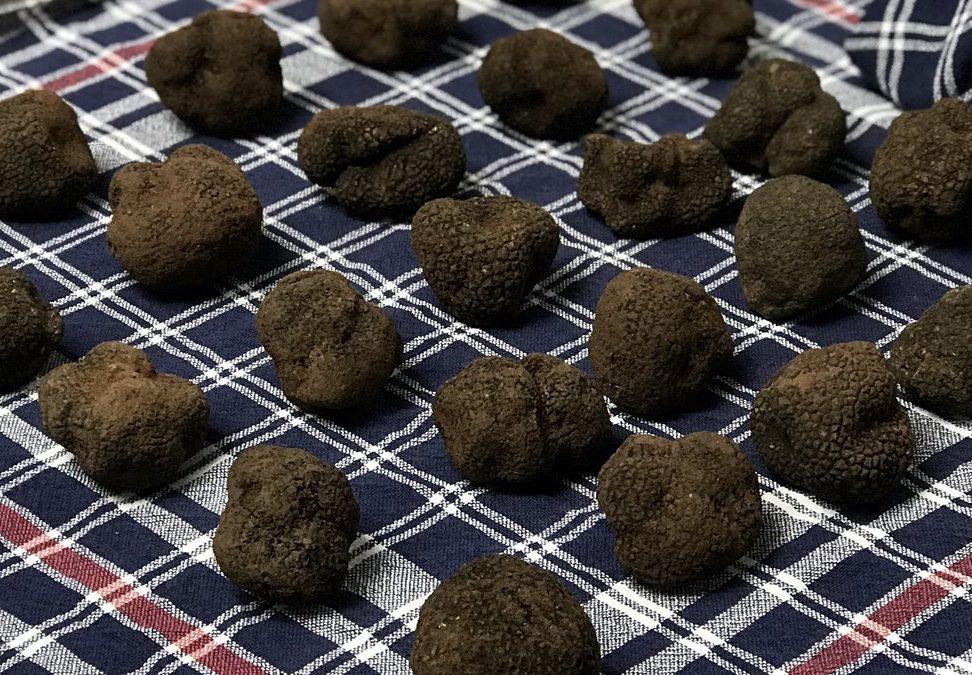
“Truffle dealing is one of the hardest, most time-consuming things I could have ever taken on,” says Thurkettle
Thurkettle treats his truffles — even the ‘dodgy one’ — with the utmost care. But it’s an affection well earned. Last year, white truffles in particular reached over €7,000 per kilo. Black are currently on €1,600. It’s a lucrative business, and the dealer is keen to expand his operations even further. Tonight, he flies to Dubai in the hope of creating a new supply line.
“The phone never stops ringing,” he laughs. “But, because they’re the last frontier of rare and incredible ingredients, there can’t be cheap truffles. Money’s the problem, though. Where there’s money, there’s always crooks.”
These crooks, Thurkettle tells me, have started to ‘cut’ prime Perigord and white truffles with cheaper Chinese truffles, or similar pretenders. It’s a development that doesn’t surprise him, but does clearly distress the dealer. As if to make himself feel better, he slices a little black truffle onto the counter, and drops the shavings into his mouth.
“There’s nothing like it,” he says, smile returning. “With white truffles, especially, the first time I tasted them, it blew my mind. My virginal tastebuds didn’t know what had hit them. I was working in a restaurant in London at the time, and ate them simply, with pasta.”
Heating things up in the kitchens of Knightsbridge
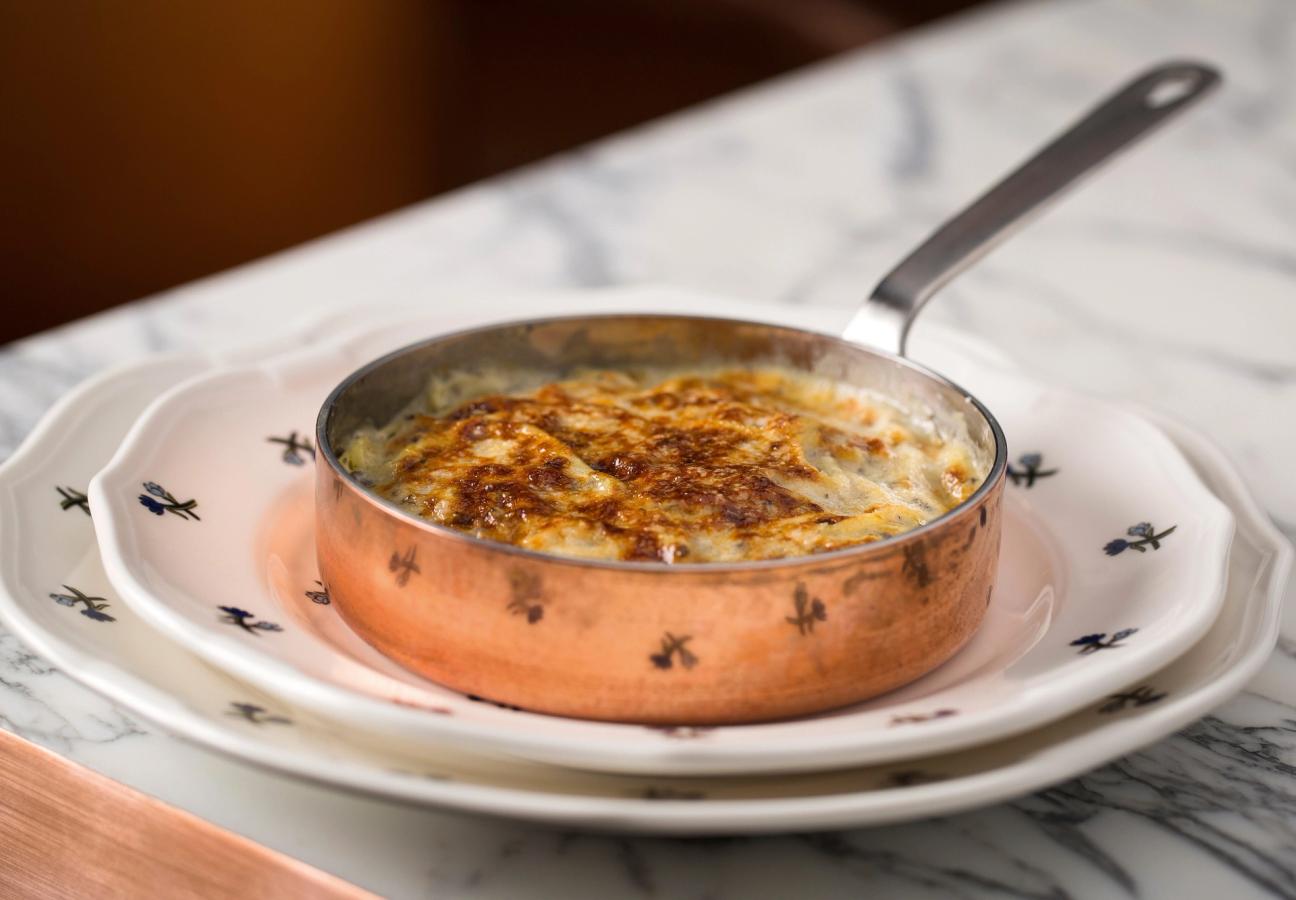
The Truffle Tagliolini at Harry’s Dolce Vita
Speaking of which, the Truffle Tagliolini is almost ready. But, before he slides the copper pan from the oven, Harry’s Chef Director Diego Cardoso is struggling to put into words the taste of truffles.
“Intense,” he finally plumps for. “And nutty. And almost like petrol – but in a good way. That’s white truffles. Black are the same but not as pungent. White truffles are an incredibly delicate product. You never cook with them, just shave them over dishes. Cut them open and it’ll give off this great aroma. And, if they’re good, these little pink patches.”
He narrows his eyes. “So sexy.”
The further you move along the truffle trail, the more theatrical their presentation becomes. In high-end restaurants, truffles are wheeled to your table and dramatically shaved over your dish. But that final flourish is just part of the showmanship, as the hype around truffles — especially in London — is rapidly becoming even bigger than the ingredient itself.
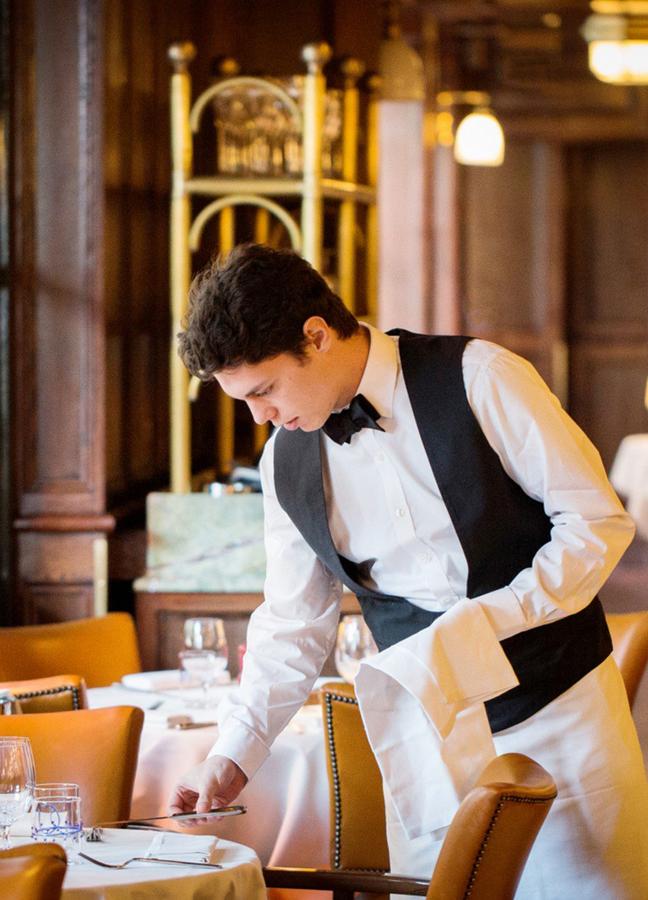
Harry’s Dolce Vita will shave white truffles at your table
“Everyone likes to impress,” claps Cardoso, “And, when white truffle season hits this September, London will go mental. There’s this big thing about getting the first really big white truffle here. It’s great publicity.
“And if chefs hear customers in their restaurant talking about how another restaurant already has white truffles, we’ll be straight on the phone to our dealers, asking where are they?”
Cardoso agrees that even here, uprooted from where they are grown, truffles both black and white are still considered the most contentious, delicious ingredients in the world. It is, of course, a shame that import restrictions, rivalries and food fraud are blighting the industry, but the chef believes that these issues afford genuine truffles even more intrigue and prestige than their considerable price tags.
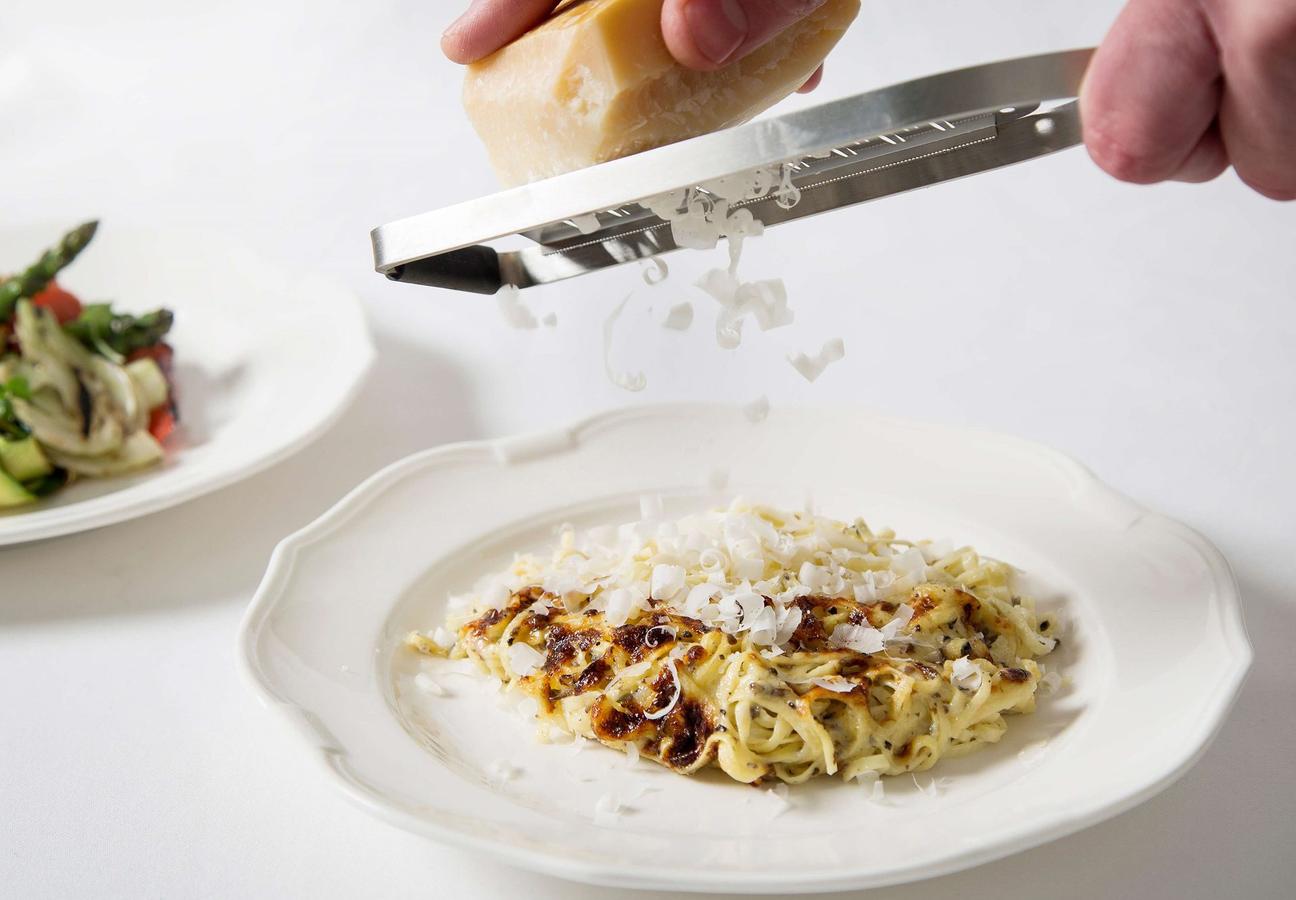
The further you move along the truffle trail, the more theatrical their presentation becomes
He pulls the pasta from the oven, thrusts a fork into my hand, and tells a final story.
“This is the thing about truffles for me. When I was younger, I was working as a sommelier. I was told I was going on a trip to Italy to taste truffles, and I knew nothing about them. I was confused, but in every restaurant, the waiters had dirty hands and kept ushering customers over to the side. They’d be pulling truffles out of their trouser pockets, still covered in soil, not to eat – but just to show that they had them.
“I found it strange at the time, but I understand it now. Truffles bring out something in the hunters, chefs and dealers — having them, or having access to them puts you in a certain group.” He pauses. “Mafia might be the wrong word — but there’s no doubting it’s an ingredient like no other.”
I take a bite. He’s right.
This article was taken from the September/October issue of Gentleman’s Journal. To subscribe to the magazine, join the Clubhouse now…
